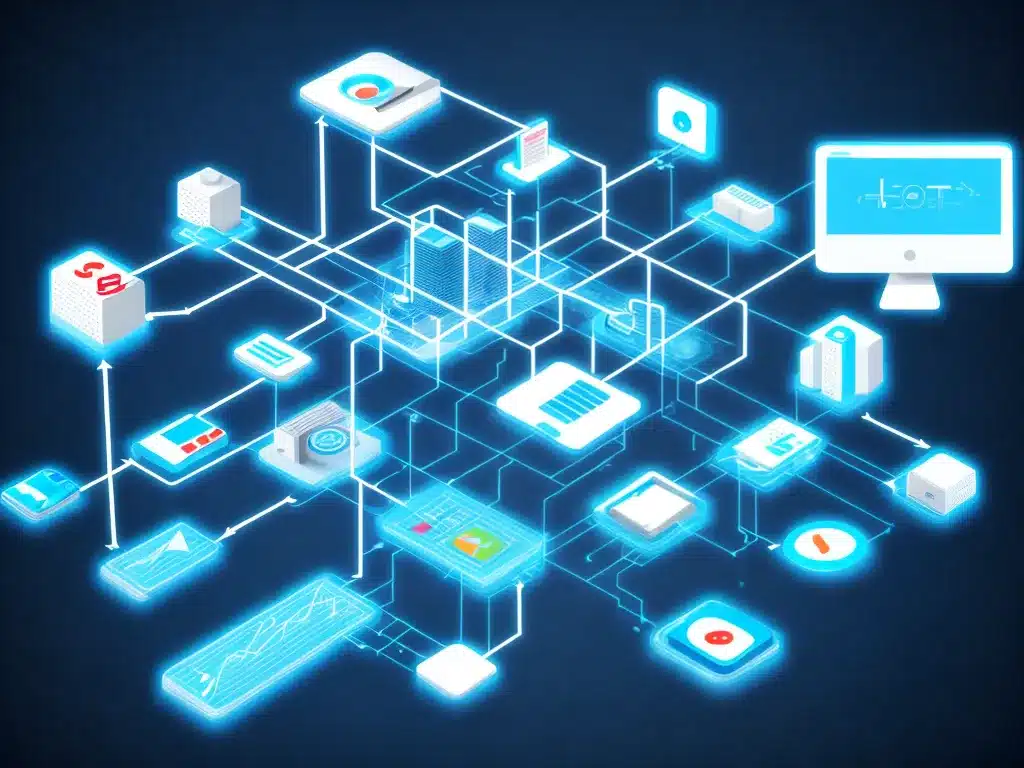
IoT Data Analytics: Deriving Value from Connected Device Data
As the Internet of Things (IoT) expands, the massive amount of data generated by connected devices presents both a challenge and an opportunity. Effectively analyzing IoT data can provide valuable insights for businesses across industries. In this article, I will explore IoT data analytics in depth, including its importance, techniques, challenges, and best practices.
The Growing Importance of IoT Data Analytics
The Internet of Things represents a network of physical objects embedded with sensors, software, and connectivity that enables them to collect and exchange data. Examples include connected consumer devices like smart watches and home assistants, as well as industrial IoT applications like smart energy grids and predictive maintenance on heavy machinery.
As IoT adoption increases, the amount of data generated grows exponentially. By 2025, analysts predict there will be 55.9 billion connected IoT devices worldwide, up from 27.4 billion in 2021. This will result in 73.1 zettabytes of data created.
While this data holds tremendous value, realizing that value depends on effective data analytics. IoT data analytics refers to the aggregation, processing, and analysis of data from connected devices to uncover actionable insights. Companies that figure out how to extract value from IoT data will gain a competitive advantage.
IoT Data Analytics Techniques and Use Cases
Several key analytics techniques are used to derive value from IoT data:
Descriptive Analytics
Descriptive analytics focuses on using past IoT data to understand and summarize what happened. This can reveal patterns, trends, and relationships in device data. Basic analytics like averages, counts, and statistical distributions fall into this category.
IoT examples include calculating real-time asset utilization rates, monitoring product quality metrics, and generating reports on system health.
Diagnostic Analytics
Diagnostic analytics aims to understand why something happened by looking at root causes. By linking IoT data with business outcomes, companies can diagnose issues.
For instance, an appliance company could determine why a batch of refrigerators failed early by analyzing sensor data on temperature, humidity, and usage patterns.
Predictive Analytics
Predictive analytics uses statistical and machine learning algorithms to forecast future outcomes. This allows organizations to get ahead of problems and take proactive measures.
Predictive maintenance is a common IoT application. By monitoring equipment vibration, temperature, and other metrics, companies can predict failures before they occur.
Prescriptive Analytics
Prescriptive analytics suggests specific actions to take advantage of predictions. It combines predictive modeling with business rules, constraints, and domain expertise to recommend data-driven decisions.
In smart energy grids, prescriptive analytics can dynamically optimize pricing and load balancing through real-time data analysis and constraint modeling.
Challenges with IoT Data Analytics
While IoT data holds great promise, several key challenges must be addressed:
-
Data quality – With so many different devices and formats, inconsistencies and errors are common. Ensuring high data quality is essential.
-
Data integration – IoT data must be integrated from numerous sources and combined with other data like customer info. This can get complex.
-
Data security – IoT devices collect highly sensitive information. Strict governance for access control, encryption, and privacy is crucial.
-
Data storage – The sheer volume of IoT data makes storage and infrastructure expensive. Cloud or selective storage is often needed.
-
Advanced analytics skills – Data scientists are required to develop and run advanced IoT analytics models like machine learning. This talent is scarce.
Best Practices for IoT Data Analytics
Here are best practices I recommend to overcome the IoT analytics challenges:
-
Start with a focused business objective to guide the analysis and drive value.
-
Carefully vet data sources and implement ETL pipelines for smooth data integration.
-
Profile and clean data thoroughly to ensure quality. Detect anomalies that could signal errors.
-
Aggregate data appropriately – high volume raw data is often distilled into lower frequency summary data.
-
Implement strong cybersecurity controls like encryption and access management.
-
Leverage cloud analytics services like AWS and Azure to efficiently store and process huge datasets.
-
Use visualization like dashboards to make insights accessible to non-technical users.
-
Build a capable analytics team including data engineers, scientists, and business analysts.
Conclusion
Effective IoT data analytics delivers powerful insights from connected devices that can transform products, services, and processes. However, it also poses big data challenges. Using techniques like predictive modeling and prescriptive analytics, while following security and infrastructure best practices, helps extract maximum value. Companies that master IoT data analytics will gain tremendous strategic benefits.












